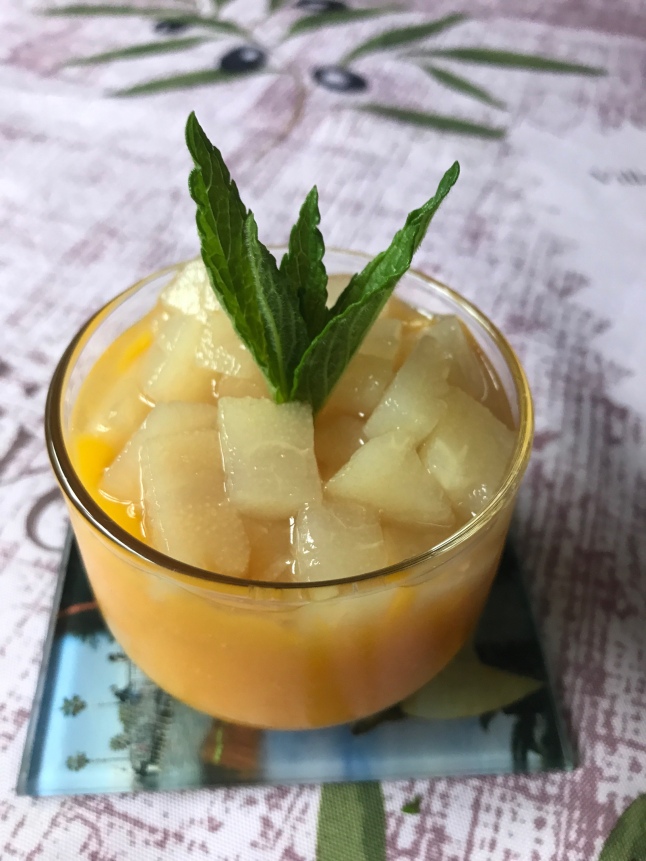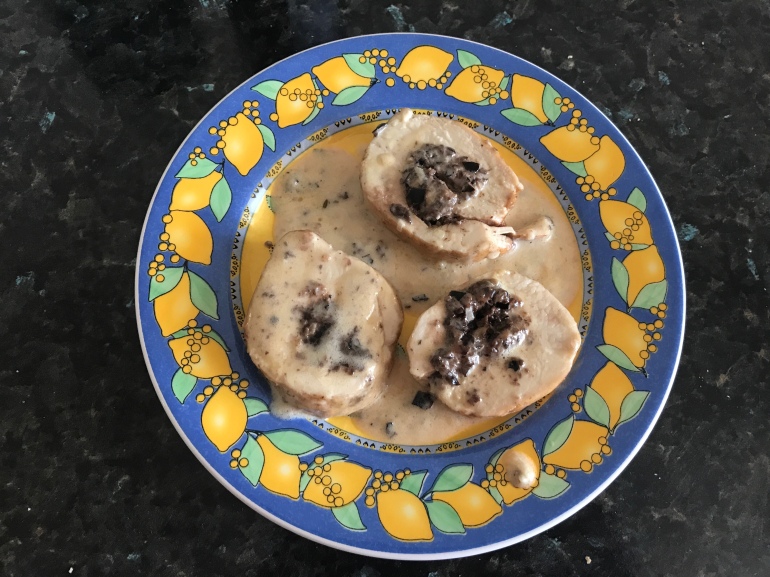A family favourite and probably my signature dish, Squid in Armoricaine sauce are a little fiddly to prepare but worth the effort.
You can use either fresh squid or frozen, the taste is not altered. Moreover, this is a dish that freezes well and it comes in handy if you have a lazy day.
People are sometimes put off the idea of eating squid because they have only eaten rubbery rings, not sufficiently cooked. In this recipe, the squid are well cooked and tender and the sauce and flambé ensure that the taste is definitely present. The other misconception is that they could be as big as the deep sea monsters featured in films. Not so, be reassured.
It is best to buy smallish squid but larger ones will mean less work for you at the preparation stage. If you like to cook en famille, young children will enjoy removing the transparent back bone (this, they can do by pulling it out, so do not need to use knives, which should be reserved for the adults cooks) and looking at the beautiful tentacles which resemble flowers. It is a good way to introduce children (but not infants) to tastier and varied dishes so they can educate their palate for adulthood.
My fishmonger sources them fresh from the coast or frozen from California, providing, as he says, that El Niño has not created a problem!
Serves 4:
1 kilo squid
1 large onion, peeled and finely sliced
4 garlic cloves, peeled and sliced
1 handful flat leaves parsley, finely chopped
2 small tins tomato purée
50g butter
2 tablespoons sunflower oil
100ml dry white wine
2 or 3 tablespoons Cognac
salt and pepper to season
- Warm up the oil in a big cast iron cocotte, if you have one, or in any cooking pot. Gently fry the onion and the garlic. Add the tomato purée with a volume of water identical to the volume of the tin. Stir and let it simmer gently. Add half the white wine.
- Rinse the squid in a colander. On a chopping board, slice them open, one by one. Chop off the head just below the eyes and under the tentacles. Remove a little white hard ball that is at the base of the head. Reserve the tentacles. Open up the body and remove the transparent backbone. Discard it (or keep it for birds). If there are eggs, remove them and discard. Slice the flesh into thin strips, approximately 1 cm wide. Keep the slices and the tentacles in a colander and rinse. There is sometimes a black ink which I do not keep, but some people do to make a sepia sauce.
- Pre-heat a metal frying pan which is not a non-stick one. Put half the squid and dry fry it until it turns light pink. Collect the cooking juices and pour them in the simmering tomato sauce. Continue cooking the squid and add 25g of butter, stir well.
- Pour 1 tablespoon Cognac on top and flambé. When the flames have died down, put the squid in the cooking pot and déglacé the frying pan with some of the remaining white wine. Add the juices to the sauce.
- Repeat the operation for the remainder of the squid.
- Simmer gently for 20 minutes and add the chopped parsley 2 minutes before serving.
- Finally, serve either on a bed of black spaghetti or on a bed of rice, with a good Chablis or any other dry white wine of your choice.
Bon Appétit!
Tip: Save the transparent back bone and let it dry. Small birds will enjoy eating it. They are the original cuttlefish bones.
The black spaghetti have been tinted with the squid ink and they give a pleasant visual contrast to the red sauce.



